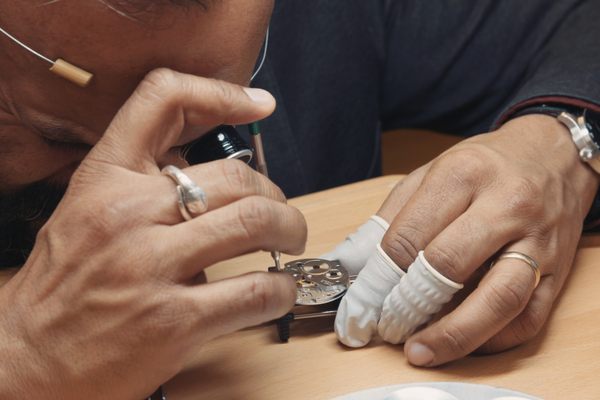Object of Intrigue: Ancient Persian Water Clocks

It’s like looking down at your watch. (Photo: Public Domain/WikiCommons)
The word for an ancient water clock sounds like a name of a Greek goddess: Clepsydra.
These age-old time-keeping devices are handsome and intriguing, using the gradual flow of water to measure time. Water clocks date back as far as 500 BC and served as a practical daily tool all over the world for well over a millennium.
In ancient Persia, the water clock was a bowl placed in a large pot filled with water. A small hole would be made in the bottom of the bowl so that water from the pot would slowly flow in; when the bowl became full, it would sink down into the pot, and a trusty time keeper would dump it out and place it back on top of the water inside the pot.
Time was thus measured by how many times the bowl sank—a bit like an hourglass with the sand swapped out for water.

This would have been the job description of a timekeeper in ancient Persia. (Photo: Maahmaah/WikiCommons CC BY-SA 3.0)
This bowl-pot tag team is one of the oldest time-measuring technologies, with evidence of use by Babylonians, Egyptians, and Native Americans, among others.
The water clock, or fenjaan, was employed in Persia to ensure fair irrigation practices. Due to the arid environment, farmers there built underground irrigation channels that carried water from aquifers to separate properties. In Persia, this system was called qanat, but it also existed elsewhere, including China’s modern-day Xinjiang Province, where you can still visit the qanat (in Uighur, karez) in the city of Turpan.
Two trusted older men from the village were chosen as full-time clock managers. They were known as khaneh fenjaan and tasked with monitoring water flow day and night. Their role was critical in ensuring that water in the qanats was diverted equally to different farms.

An outflow clepsydra. (Photo: Maahmaah/WikiCommons CC BY-SA 3.0)
There also existed an even simpler form of outflow clepsydra, known for its use in timing speeches in ancient Rome. This water clock was basically a graduated cylinder with a hole, the passage of time measured by keeping track of the level of remaining water. It could be filled halfway for short speeches and topped off for longer ones, and if a speech or hearing required suspension, the hole could be temporarily plugged with wax.
Later and more complicated forms of clepsydra incorporated mechanisms involving gears and wheels, and clepsydras remained in wide use until pendulum clocks made their debut in the 17th century.
But, should you ever find yourself stranded in the woods sans modern technology and trying to hold an election, you can fashion a fenjaan to keep candidates’ speeches in check.

This story appeared as part of Atlas Obscura’s Time Week, a week devoted to the perplexing particulars of keeping time throughout history. See more Time Week stories here.
















Follow us on Twitter to get the latest on the world's hidden wonders.
Like us on Facebook to get the latest on the world's hidden wonders.
Follow us on Twitter Like us on Facebook